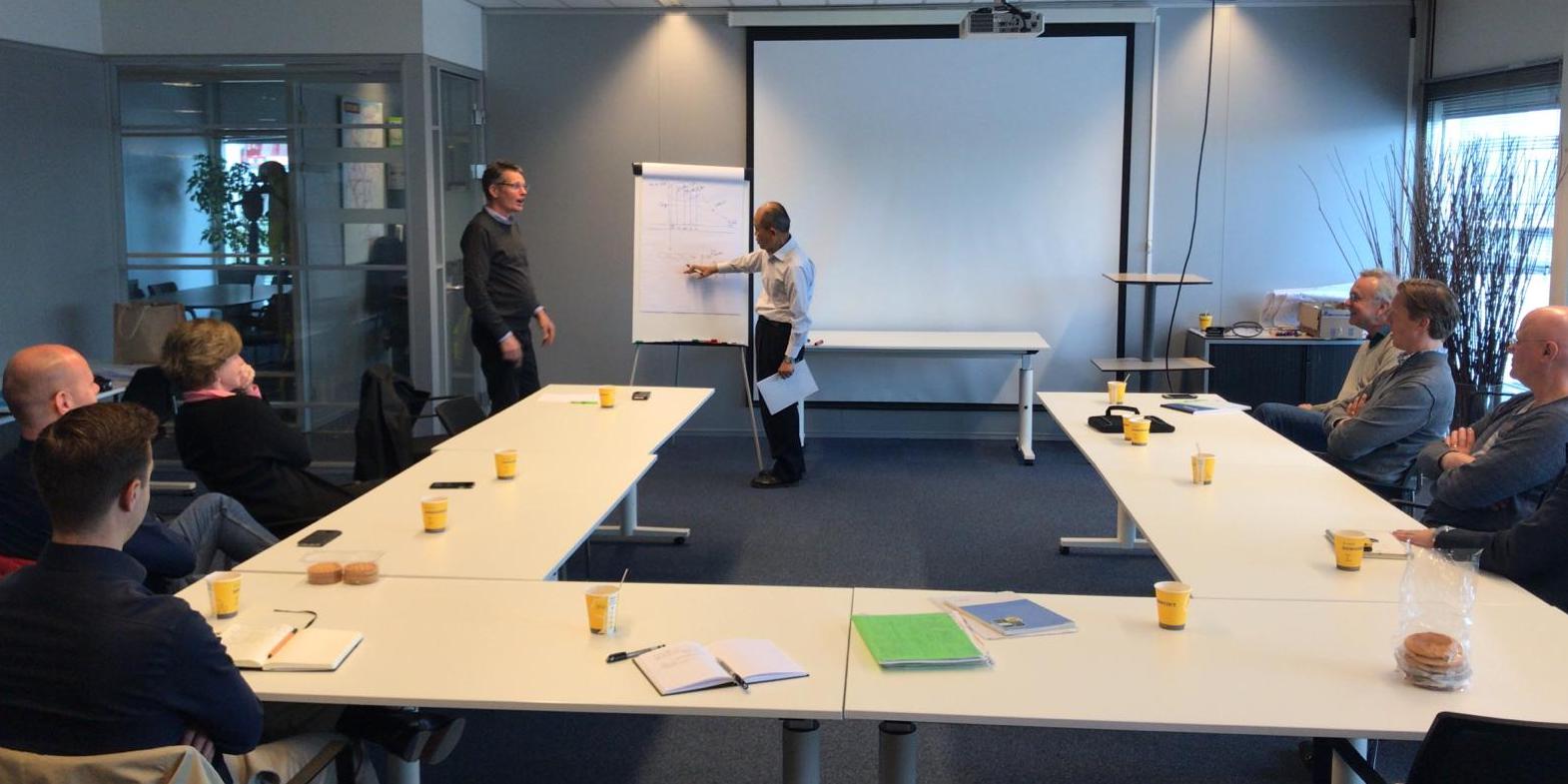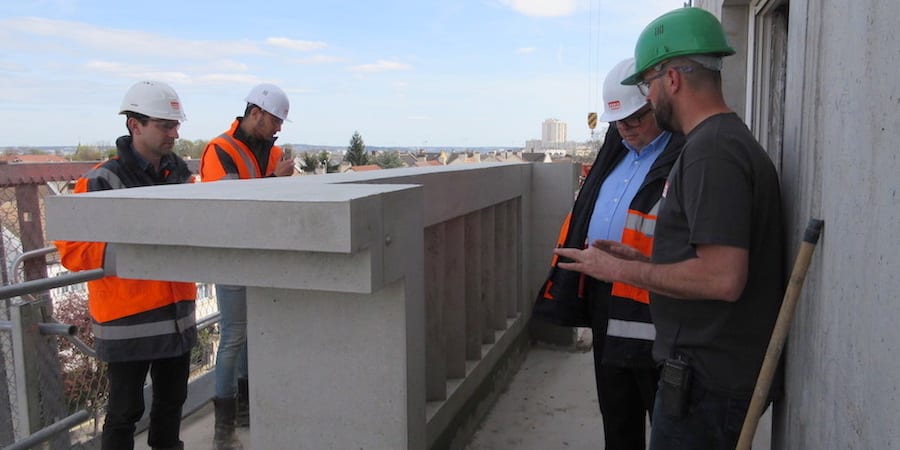
How Nike created a successful lean IT obeya
FEATURE – An obeya room can be the cornerstone of a lean transformation, but developing a successful visual management environment is easier said than done. Nike’s Technology department shares a few tips.
Words: Fred Mathijssen, Senior Direction of Technology, Nike Europe
The first time I realized the power of visual management was when I was visiting our European Distribution Center in Laakdal, Belgium, around five years ago. What I saw there inspired me to try and bring the same type of principles to Nike’s Technology organization.
But how could I, as a leader, support the development of an effective obeya room in the department I was running?
I thought a good way to start would be to ask everybody in the department to read Lean IT, which I had found extremely useful. I was sure this would help us get the traction and support we needed to get started.
It worked, and a lot of great ideas started popping up. Reflection ensued, as we pondered what the most important information was that we wanted to share in our obeya, and what effect we wanted it to have on organizational behavior.
Before I explain our journey, however, it’s important to note that “obeya” literally means “big room” and suggests that a team comes together in a large, visual room, to get their work done. It can be used for a variety of endeavors – product development, software development, project management, workflow management, even planning the holiday party. Globally, Nike has been using visual, collaborative workspaces successfully in many ways for many years – we’re a highly visual, collaborative and innovative company to start with. What’s special about our particular obeya is that we’re using it for Nike IT EMEA’s strategy deployment (also known as hoshin kanri) where we visually connect top-level enterprise strategy through specific initiatives and kaizen.
When we first began, though, mostly for practical reasons, we decided to focus on the Portfolio and Project Management function within Technology, for which we already had a lot of information. Soon after, we expanded to the point where we covered each project we undertook until, eventually, the strategy that guided portfolio decisions went on the wall as well. Essentially, the obeya fed itself.
As you know, success breeds success. The more work we invested in our obeya, the more results we started to see. People started to come in and ask questions, and soon the rest of Nike Technology was caught up in the excitement.
When I became Senior Director of Technology, the challenge for me became how to scale our efforts to reach the various departments in the organization. About that time we were reorganizing our offices, and my entire senior leadership team gave up their private offices, favoring a more open, visual workspace. We repurposed the extra space, tripling the size of the IT leadership obeya, and also added an innovation room next door. Such dedication and investment from senior leadership sends a clear message.
TRIAL AND ERROR
People often ask me what it takes to put together a successful obeya. While there is no magic bullet, what is absolutely required is not just inspiration and high levels of creativity but also perseverance. If you go down this path expecting quick results, don’t even start. This is foundational culture change, and it plays out by people learning new behaviors and modes of interaction.
The development of Nike Technology’s IT leadership obeya happened through trial and error. At the beginning we had a vague idea of what the obeya would look like, but it took several iterations to get closer to our target.
We always thought our decisions through, to determine whether they were indeed the best course of action: “Is that the right data to put on the wall?” or ”Are we displaying data in the right format?” were some of the questions we commonly asked ourselves. Most importantly, we always wondered how we could keep the data relevant for our stakeholders to actually discuss it, learn to see and solve problems, and make decisions.
Clear evidence that the obeya was working started to appear as key stakeholders across Nike Technology began to have their key planning and review sessions in there. Before long, we had to carefully schedule the room, because it had become so popular. We also discovered that decisions were made more quickly and confidently in the obeya, since people were immersed in the information they needed to explore alternatives, ask questions, and formulate hypotheses – the foundation of informed decision-making. In such an environment, people demonstrated that they could come together, tackle tough challenges, and move the ball down the field towards the goal line.
What many forget is that people are (or at least should be) the biggest beneficiaries of the introduction of an obeya.
In our organization, we want employees to understand how their work contributes to Nike’s strategy, the European strategic imperatives and the Technology business goals. But it doesn’t stop there: most of them are now seeing a significant improvement in clarity on goals, and productivity in achieving focused improvements since lean, strategy deployment, and the obeya were introduced.
It is a slow process, and it is important to persevere and be patient. Almost a year ago, for example, we added a wall to the obeya to track day to day operational issues, but it is only in the past couple of months that we are seeing it actually drive change and having a positive influence on how we address and resolve incidents. Ultimately we expect to see fewer incidents in the first place.
Another difficulty anybody who is putting together an obeya should be aware of is striking the right balance between mandating standards in processes and documentation and unleashing the creativity of people in building an operational visual environment.
Standards are necessary (at Nike, like other organizations, there is an expectation that people follow them to the letter) and after a while they become part of the DNA of an organization, but we shouldn’t forget the importance of allowing our people to come up with creative solutions to problems. In our experience, an obeya room creates a safety zone to make goals and problems visible, so they can be discussed openly, which leads to creative problem solving and innovation.
THE POWER OF EXPERIMENTS
This journey has changed the way I act as a leader: I am now an evangelist and I feel the responsibility to ensure more and more people are given the encouragement to experiment and occasionally fail, as long as they learn from those experiences.
This is the great thing about working at Nike: people are free to experiment and innovate. In other words, if we think something might help the organization improve, we just do it. Pun intended.
THE AUTHOR

Read more


INTERVIEW – A couple of weeks ago, our editor caught up with Toyota veteran Sadao Nomura. In this Q&A, he discusses quality improvement and leadership engagement.


NOTES FROM THE GEMBA – With a strong focus on quality and on solving problems once and for all, Paris Ouest Construction has managed to weather the storm of the recession, the author finds out during a gemba walk.


INTERVIEW – Lean is making inroads in the Middle East! In this interview, a Senior VP of Gerab National Enterprises tells us how the company is using lean to reinvent itself as a project management firm.


NOTES FROM THE GEMBA – The author visits a comparison website that is gradually integrating agile and lean thinking in its processes, identifying new and exciting improvement opportunities.

